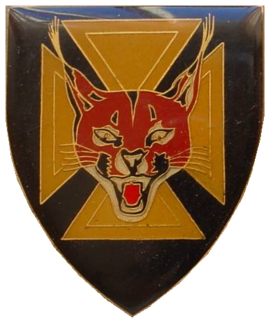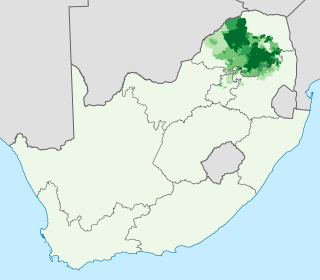
The South African Army is the army of South Africa, first formed after the Union of South Africa was created in 1910. The South African military evolved within the tradition of frontier warfare fought by Boer Commando (militia) forces, reinforced by the Afrikaners' historical distrust of large standing armies. It then fought as part of the wider British effort in World War II, but afterwards was cut off from its long-standing Commonwealth ties with the ascension to power of the National Party in South Africa in 1948. The army was involved in a long and bitter counter-insurgency campaign in Namibia from 1966 to 1990. It also played a key role in controlling sectarian political violence inside South Africa during the late 1980s and early 1990s.
The Southern African Development Community intervention in Lesotho, codenamed Operation Boleas, was a military invasion launched by the Southern African Development Community (SADC), and led by South Africa through its South African National Defence Force into Lesotho to quell a coup d'état.

The Nkwe ya Selefera - Silver Leopard, post-nominal letters NS, was instituted by the President of the Republic of South Africa on 16 April 2003 and came into effect on 27 April 2003. It is South Africa's second highest military decoration for bravery.

The Nkwe ya Boronse - Bronze Leopard, post-nominal letters NB, is a military decoration for bravery which was instituted in 2003. It is South Africa's third highest military decoration for bravery.

1 South African Tank Regiment is an armoured regiment of the South African Army, based at the Tempe military base in Bloemfontein as part of the South African Army Armour Formation.

General Solly Zacharia Shoke, is a South African military commander. He joined Umkhonto we Sizwe (MK), the military wing of the African National Congress, in the 1970s, and served as a field commander fighting against the South African government in the 1980s. He transferred to the South African National Defence Force when MK was incorporated into it in 1994, and has served as Chief of the South African National Defence Force since 2011.
Lieutenant-General Vejaynand Indurjith Ramlakan is a South African military commander. A medical doctor, he served in Umkhonto weSizwe (MK), the military wing of the African National Congress, during the liberation struggle against the South African government in the 1980s, and transferred to the South African National Defence Force when MK was incorporated into it in 1994.

The Van Riebeeck Medal, post-nominal letters VRM, is a military decoration for bravery which was instituted by the Union of South Africa in 1952. It was awarded to other ranks for distinguished service in the field.

The Korea Medal is a military campaign medal which was instituted by the Union of South Africa in 1953. It was awarded to volunteers of the Union Defence Forces for service in Korea during the 1950-1953 Korean War.

Lohatla is a training area of the South African National Defence Force. It is located in the Northern Cape province of South Africa and is home to the SA Army Combat Training Centre, which is part of the South African Army Training Formation.

The Commando System was a mostly voluntary, part-time force of the South African Army, but in their role as local militia the units were often deployed in support of and under the authority of the South African Police.

The Pro Patria Medal is a South African military campaign medal which was instituted by the Republic in 1974. It was awarded to members of the South African Defence Force for service in an operational area, as designated by the Minister of Defence.

43 South African Brigade is a formation of the South African Army. It was established on 2 April 1997 at Wallmannsthal, Gauteng as 43 Mechanised Brigade and then changed to 43 South African Brigade in 1999. Administratively, the headquarters answers to the Chief of the Army. Operationally and for force training, the formation takes instructions from the Joint Operations Division. Units and subunits are attached as required for the task at hand. When not required, those units remain part of their respective type formations.
The South African Government has assisted the government of François Bozizé in the Central African Republic militarily. After 13 paratroopers were killed in the March 2013 battle for Bangui, the Zuma government came under heavy criticism and questioning for this support.
The South African Defence Review 2012 was a policy review process carried out by a panel of experts, chaired by retired politician and former Minister of Defence, Roelf Meyer. The review was commissioned by Lindiwe Sisulu the then Minister of Defence and Military Veterans, in July 2011. The review was motivated by the need to correct the errors and shortcomings of the previous review.

7 South African Infantry Battalion is a motorised infantry unit of the South African Army.

8 South African Infantry Battalion is a mechanized infantry unit of the South African Army. The battalion is equipped with Ratel Infantry Fighting Vehicles (IFV) used for fast transport and combat mobility across rough ground. Support weapons for mechanized infantry are also provided with motorized transport, or are built directly into these IFVs, in order to keep pace with the IFVs in combat. The battalion was raised at Upington in the Northern Cape in 1973, and assigned to the Infantry Formation.

















